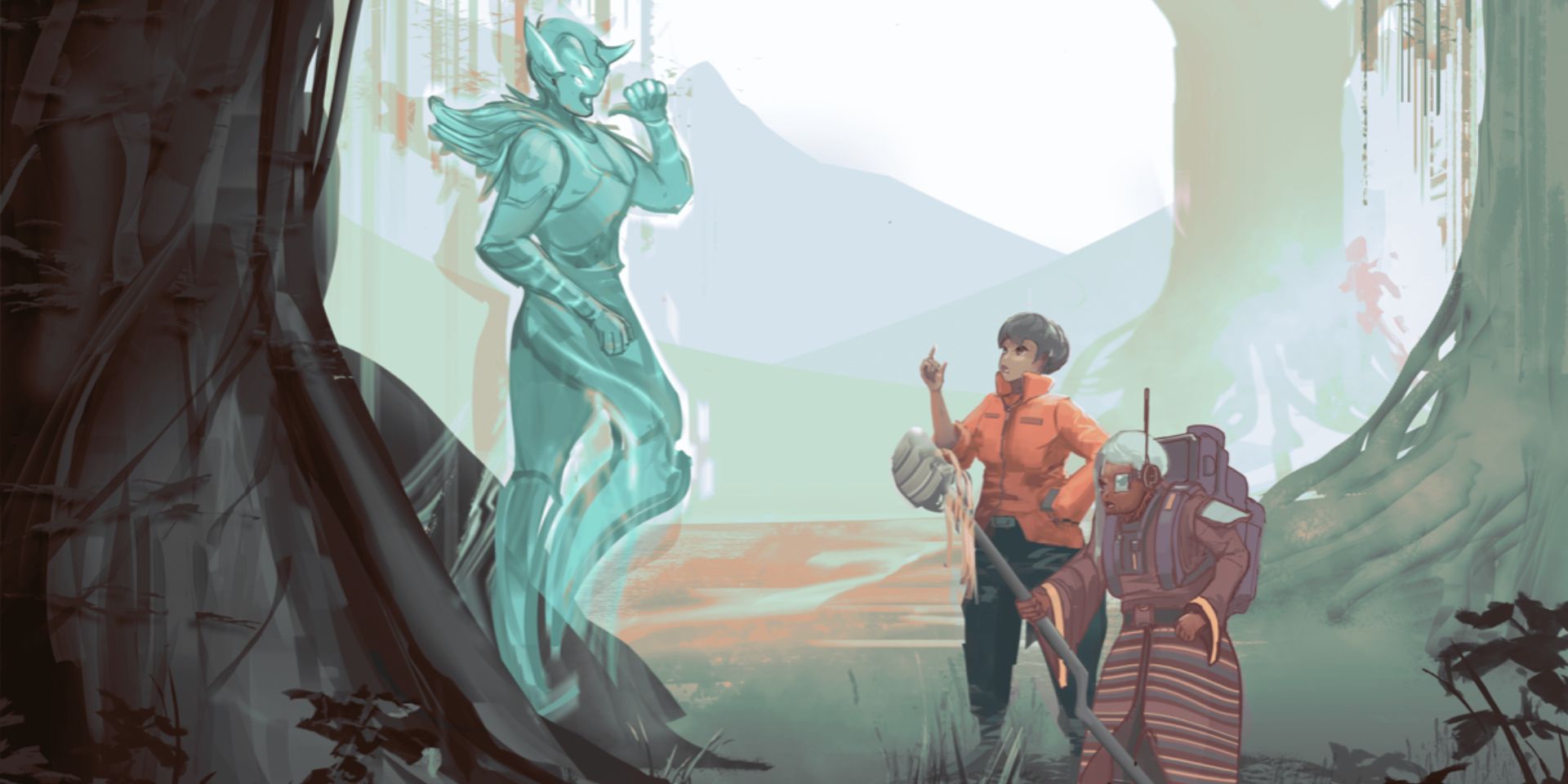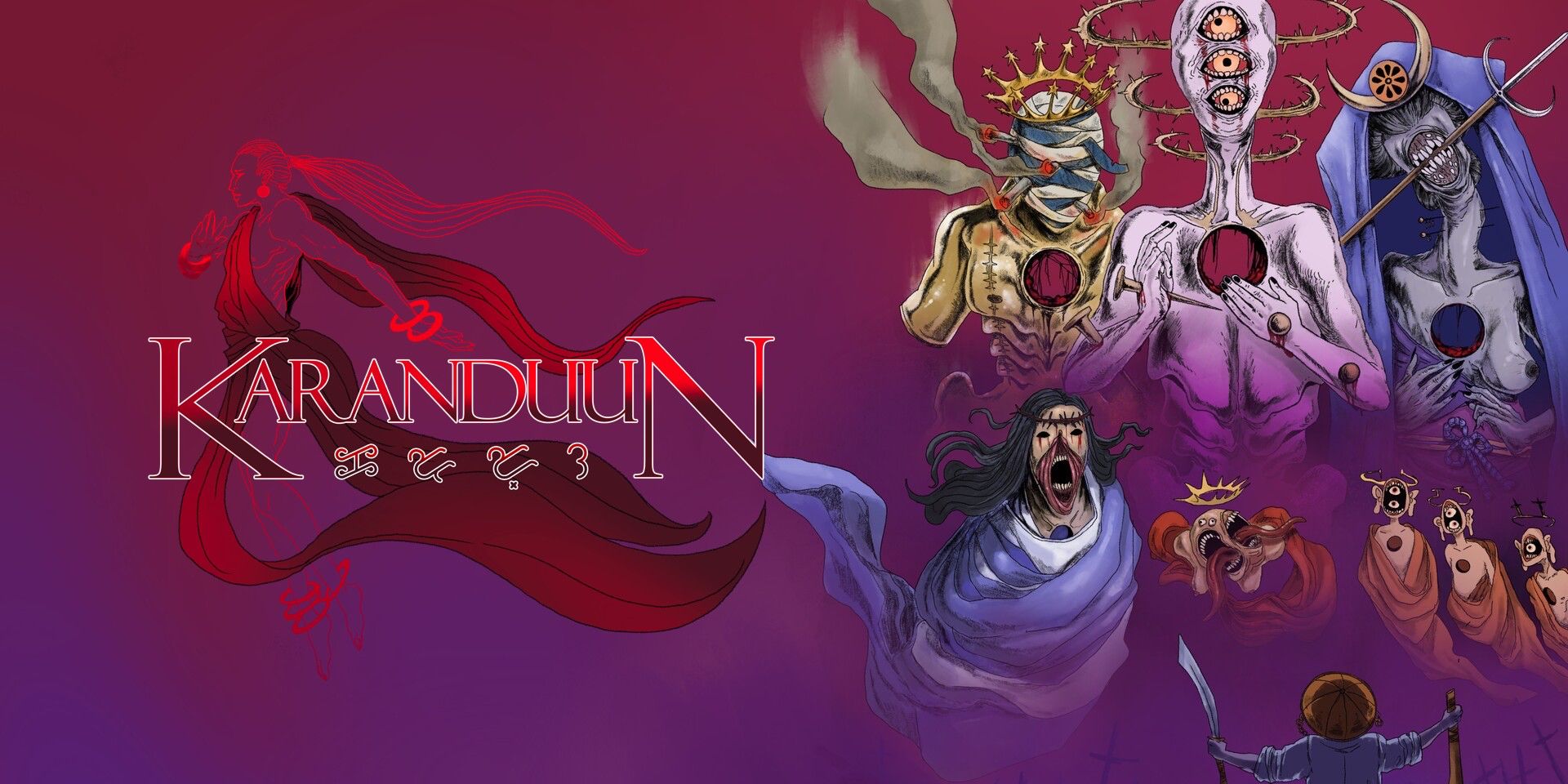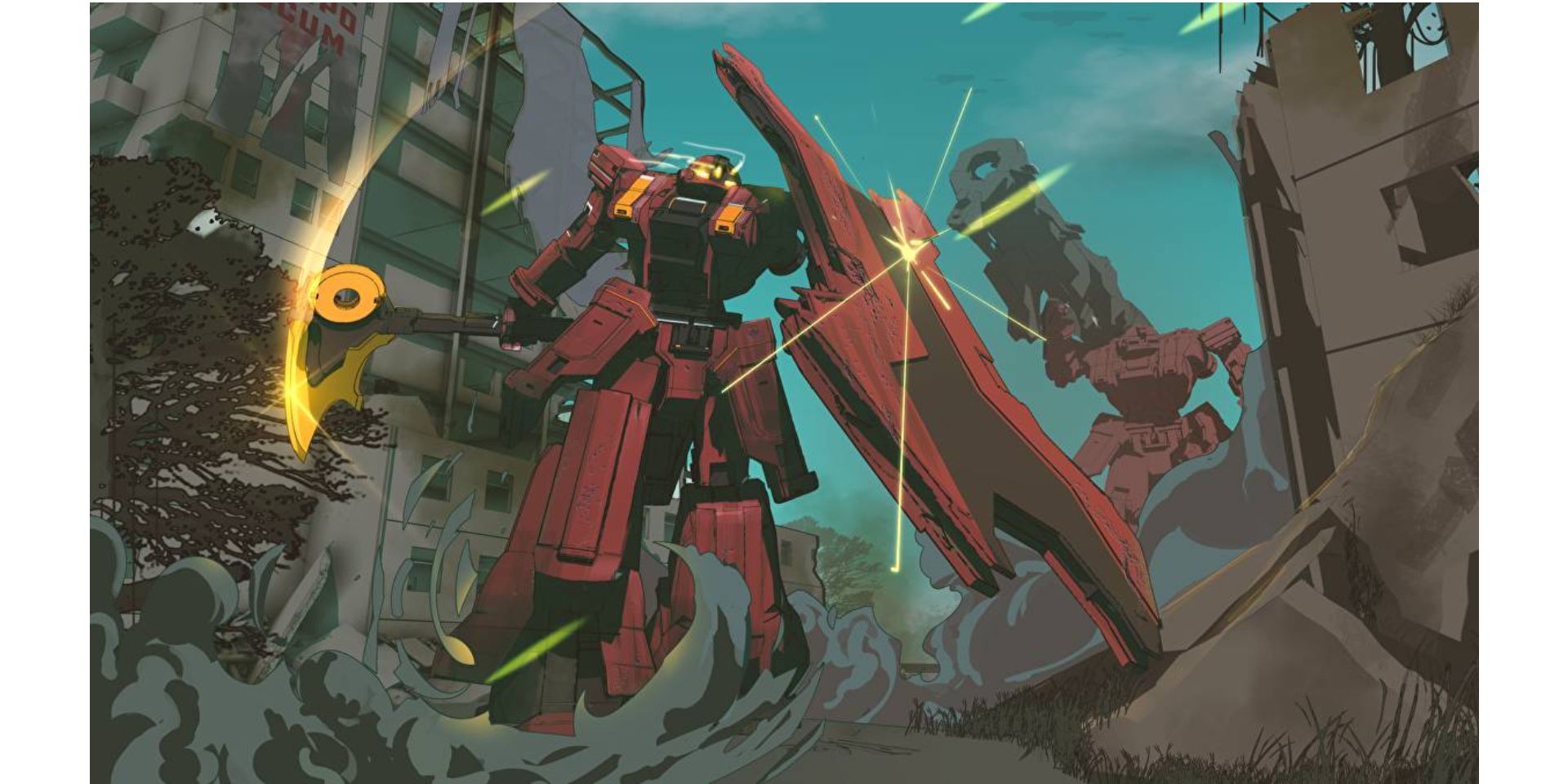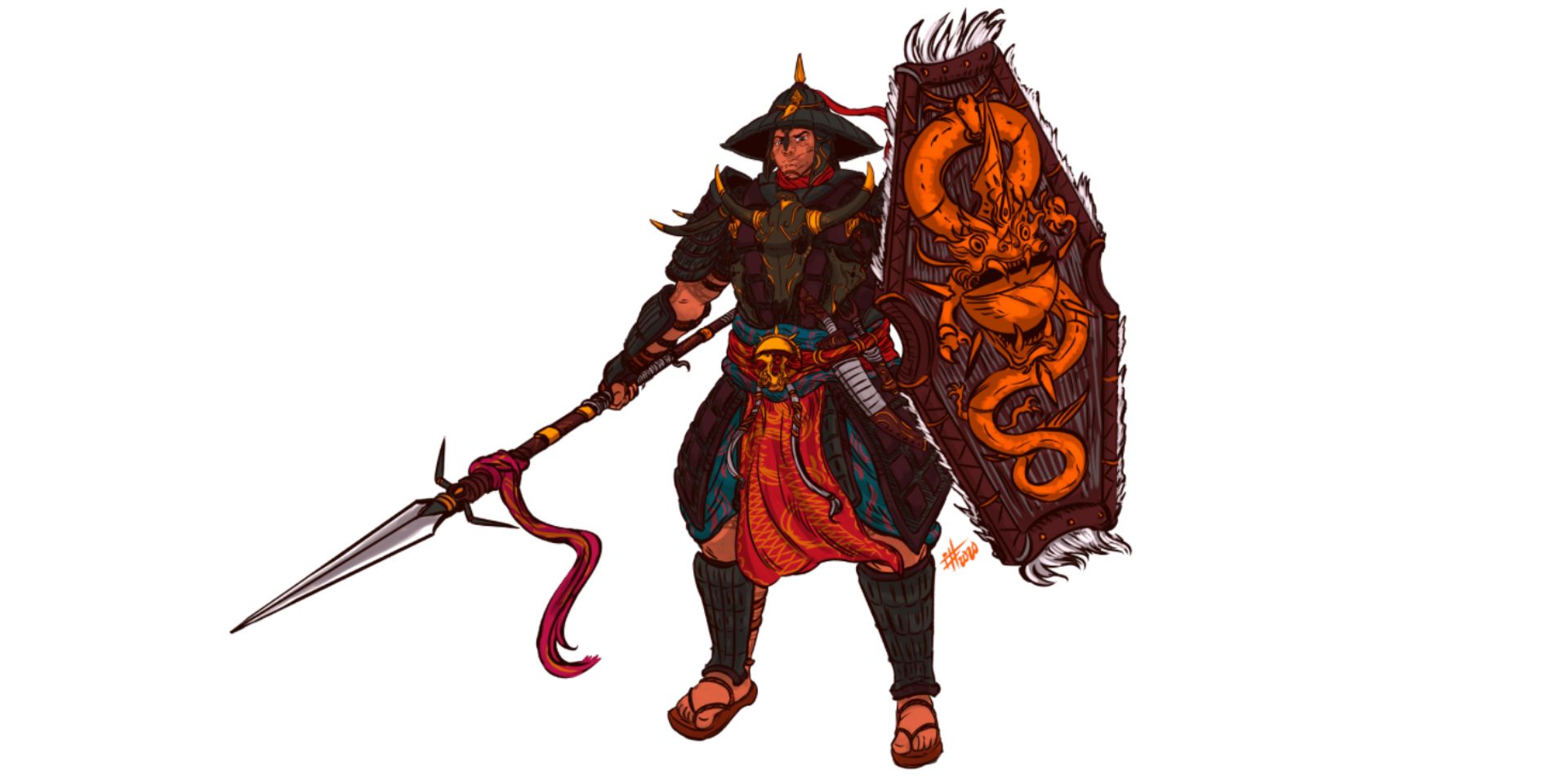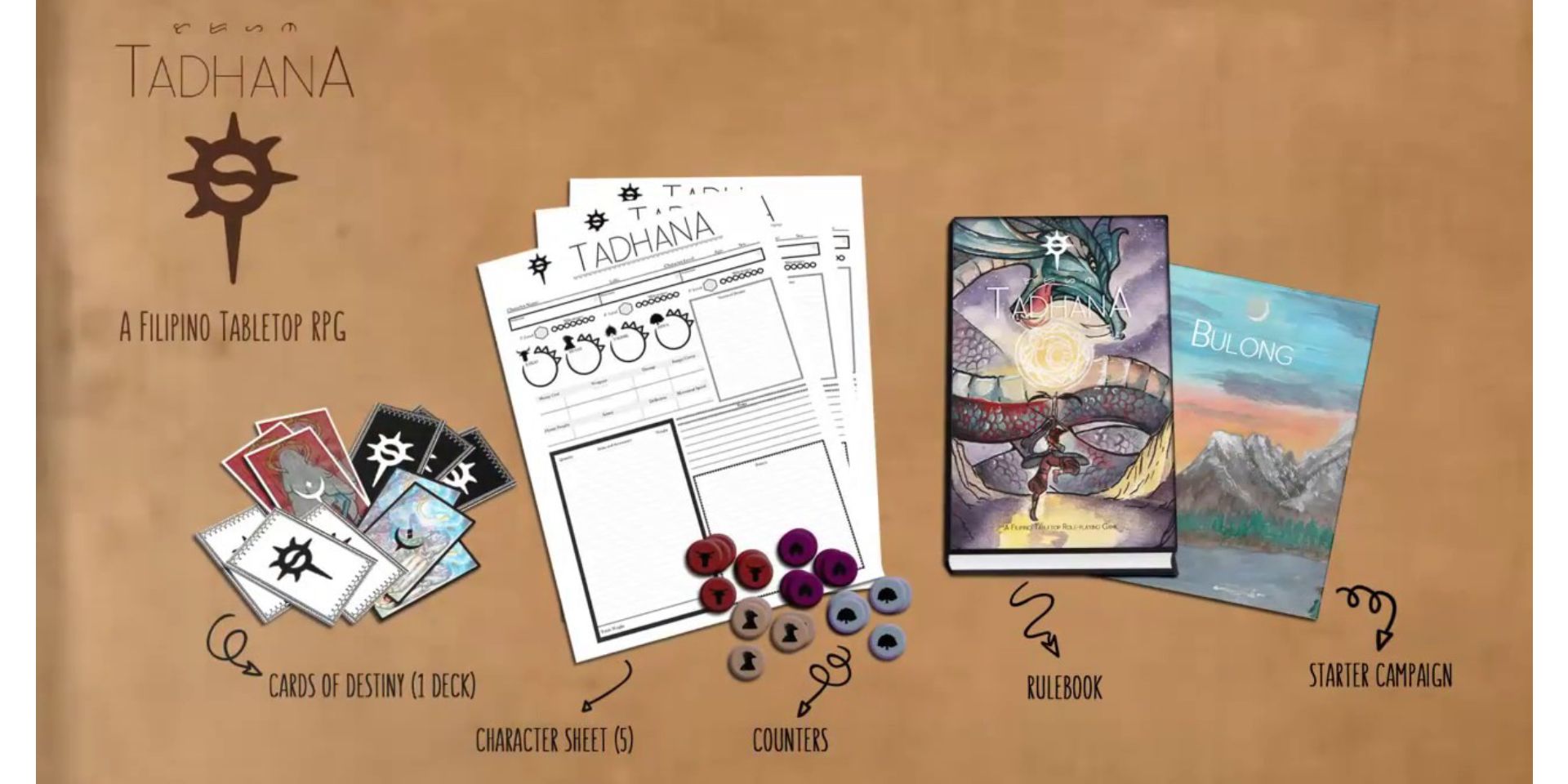The earliest tabletop roleplaying games – Dungeons & Dragons, Traveller, Runequest – were made by American designers inspired by Western genres of fantasy fiction, but the concept of tabletop RPGs was swiftly adopted and localized by gamers in other countries like Sweden, Japan, and in more recent years, the Philippines. Through indie publishing websites and crowd-sourcing venues, modern-day Filipino gamers and game designers are creating games with themes resonant with their archipelago lives – fantasy RPGs like Tadhana themed around pre-colonial history and Tagalog mythology, weird fantasy RPGs like Karanduun steeped in themes of anti-colonial rebellion, and sci-fi RPGs like Maharlika that project the the culture and ecology of the Philippines into an expansive interstellar future.
The Philippines, stretching across the western half of the Pacific Rim, are an archipelago of immense biological and social diversity, thanks to the distinct flora, fauna and cultures on each island, along with the legacy of many diasporas and invasions. The pre-colonial Philippines were a mélange of kingdoms ruled over by Datu aristocrats, their cultures tinged by trade and immigrants from China, India, and Islamic states. Spain's colonial conquests in the 16th century imposed Spanish language, social structures, and Catholicism, while the American and Japanese occupations of the late 19th/early 20th century left their own marks on the Filipino way of life. In the wake of all these migrations, occupations, and revolutions, the "Filipino identity" is multi-faceted, a complexity expressed vividly in Filipino movies, comics, shows, and games.
The Filipino-made tabletop roleplaying games listed below (three of them made by indie game designer Joaquin Kyle Vincent “Waks” Saavedra) are arguably attempts to reconcile modern cosmopolitan Filipino society with the myths, folk tales, and cultural traditions long-repressed under colonial rule. They're also politically active works filled with anger and passion, telling stories centered around rebelling against and transcending an unjust status quo. Last but not least, they're fun, action-packed indie tabletop RPGs where players can make awesome characters that do awesome things, adapting the rules and tropes of American, Japanese, and Chinese fantasy RPGs into something fun and unmistakably "Filipino."
Karanduun: Make God Bleed
Karanduun: Make God Bleed describes itself as "modern Filipino Epic RPG about worthless heroes dismantling God, whatever cycle of oppression that must be." Appropriately enough, this RPG is set in a universe where Gods can and have died – some at the hands of other gods, and others at the hands of the "Karanduun," exceptional mortals who challenge gods and destiny with spiritual powers, formidable martial skills and a knack for standing up to oppressive rulers.
The "Alamatpunk" universe of Karanduun: Make God Bleed, ruled over by the Holy Trinity of deities who murdered Batala the Creator, blends trappings of modern day Filipino society with ancient Filipino myth and historical events – featuring industrial cities co-inhabited by humans, spirits, and giant boars alongside more traditional fantasy landscapes where guerrilla fighters and martial societies plot rebellion against the puppet regimes controlling their homelands. Gameplay-wise, Karanduun: Make God Bleed borrows heavily from the narrative mechanics of "Powered By The Apocalypse" games, putting the fiction first and generating interesting plot developments from each roll of the dice.
Maharlika
In 1978, a Japanese children's cartoon called Voltes V aired on several Philippine TV stations, a giant robot melodrama where a group of plucky teenager pilots and their "Voltes V" combining mecha defended the Earth from the war machines of a tyrannical alien empire. An Esquire article recounts how, afterwards, dictator Ferdinand Marcos had Voltes V pulled from the air for promoting violence and subversiveness (the Voltes V team sparks a political rebellion on the alien empire's homeworld during the the series finale), and this fairly popular kid's show inadvertently turned into a powerful symbol of anti-authoritarianism, with a major fandom developing in the Philippines after the People's Power Revolution of 1986 ousted Marcos from power.
The setting of Maharlika, a science-fantasy Mecha RPG, owes more to military sci-fi games like Battletech than the superhero action of Voltes V, but contains the same themes of rebellion and defiance against stratified social systems that made Voltes V so popular in the Philippines. The titular Maharlika are spirit-warriors who control "Meka," techno-mystical war-machines forged from steel, bamboo, and Mangkono ironwood, then animated by "Diwata" spirits from an animistic kind of hyperspace.
Players of Maharlika may choose to fight Xenobeings in defense of the feudal interstellar polity known as the Lakanate, take payment from the great corporations to fight in proxy wars, or carve their own path and fight for their own ideals. Narrative dice mechanics are used to explore character relationships outside of combat, while more formal Lancer RPG-inspired rules to capture the destructive, dynamic atmosphere of giant robot battles.
Gubat Banwa: The Warring States of Kitatak
If Karanduun: Make God Bleed is subtextually a game about throwing off the yolk of colonialism, then Gubat Banwa: The Warring States of Kitatak, released in early access on itch.io, is a tactical fantasy RPG meant to homage the culture, traditions, spiritual ecologies, epics, and wars of the pre-colonial Philippines, a time commonly referred to as the Late Porcelain Period. In the fictional fantasy archipelago of Kitatak, players are Maggugubat, members of their nation's warrior castes, who fight in the name of the Datus and Sultans they swore faith to... even if it means turning their blades and spells against family, lovers, or friends.
Narratively, the Gubat Banwa is about telling character-driven war stories in the vein of Fire Emblem or Final Fantasy Tactics, focusing on the painful clashes of nations, philosophical ideals, and divided loyalties on the battlefield. Mechanically, Gubat Banwa is high on "crunch," with a Dungeons & Dragons 4th edition-inspired ruleset that rewards tactical maneuvering and clever use of battlefield abilities.
Twenty-sided dice are rolled to adjudicate the success or failure of attacks, spells, and special abilities during grid-based combat scenarios. Outside of fight scenes, players roll a handful of four-sided dice to see how well they do at certain actions, a deliberate homage to the pre-colonial practice of casting lots of crocodile teeth or boar tusks.
Tadhana: A Filipino Tabletop RPG
Tadhana: A Filipino Tabletop RPG also takes place in a universe drenched in pre-colonial Filipino history/mythology, where human co-exist with magical creatures inspired by beings of folklore – the mountain-dwelling Tikbalang horse people, Diwata nature spirits, the shapeshifting, life-drinking Aswang, etc. Unlike Gubat Banwa, Tadhana is less-focused on warfare and more focused on gameplay where player characters explore their magical world and live up to their responsibilities given to them by their communities. Dungeons & Dragons-style classes and ability customization mechanics let players create unique character archetypes over the course of play, while the primary resolution mechanic shuns dice in favor of a deck of forty cards called the Cards of Destiny modeled after Tarot Decks.

